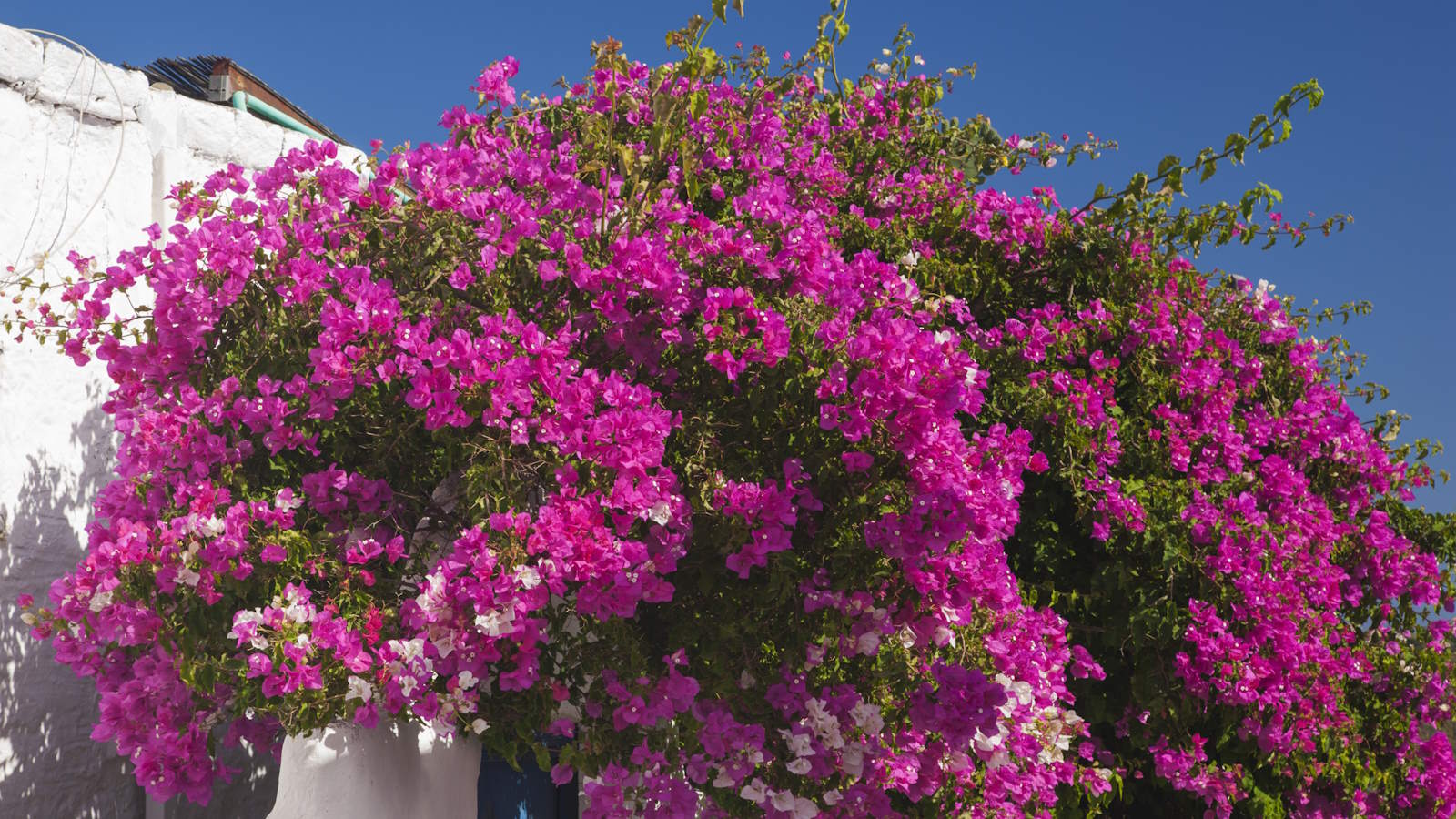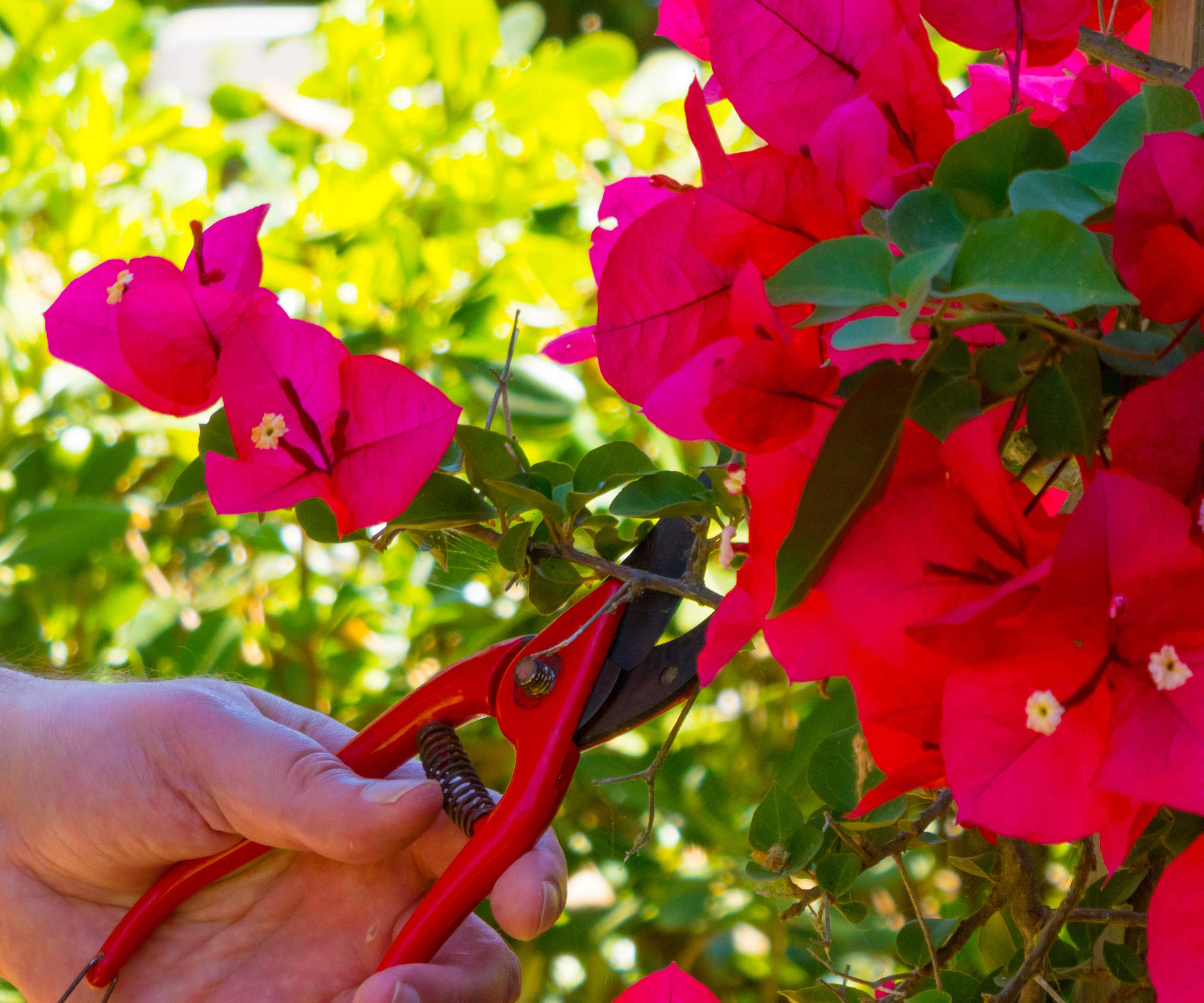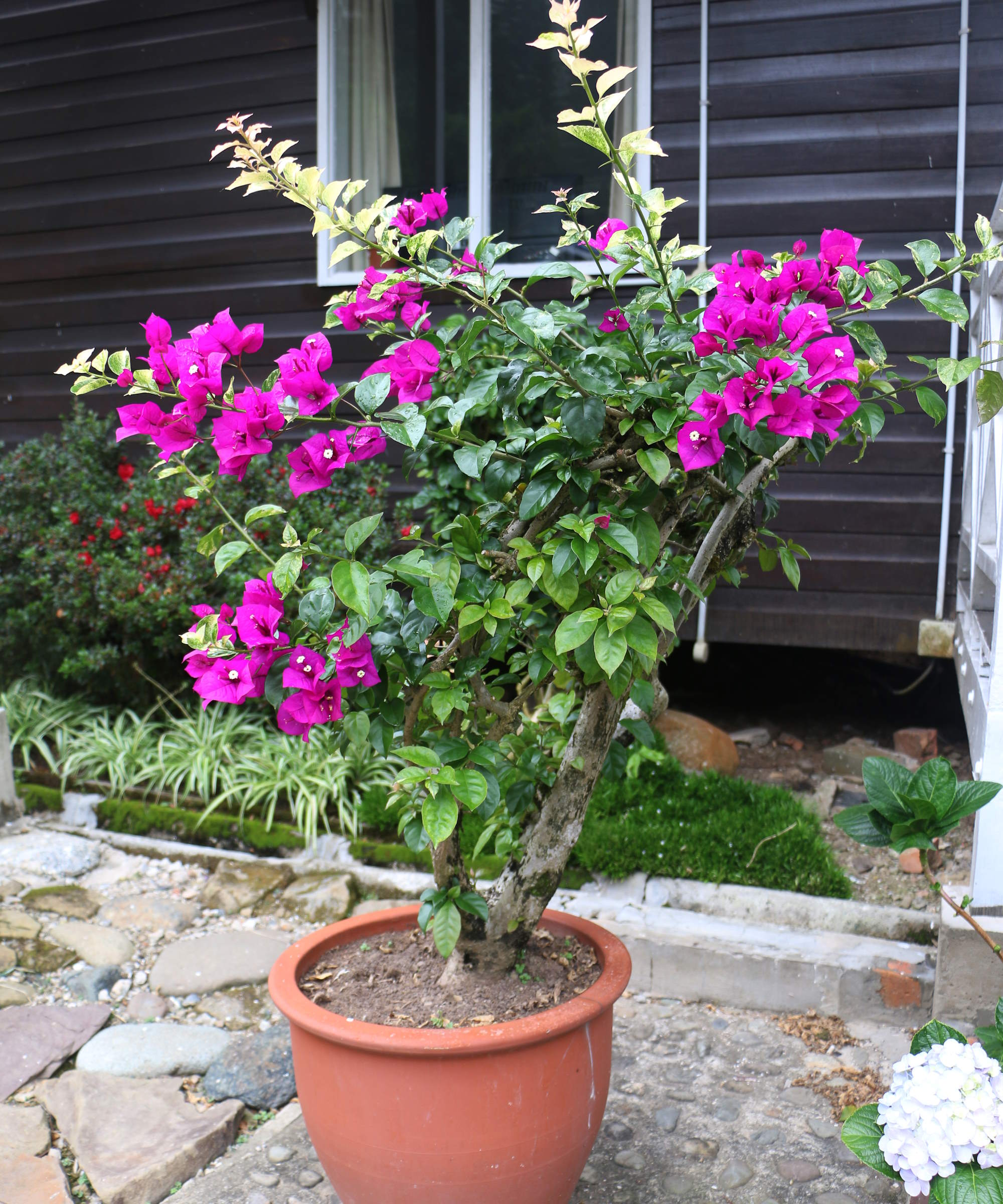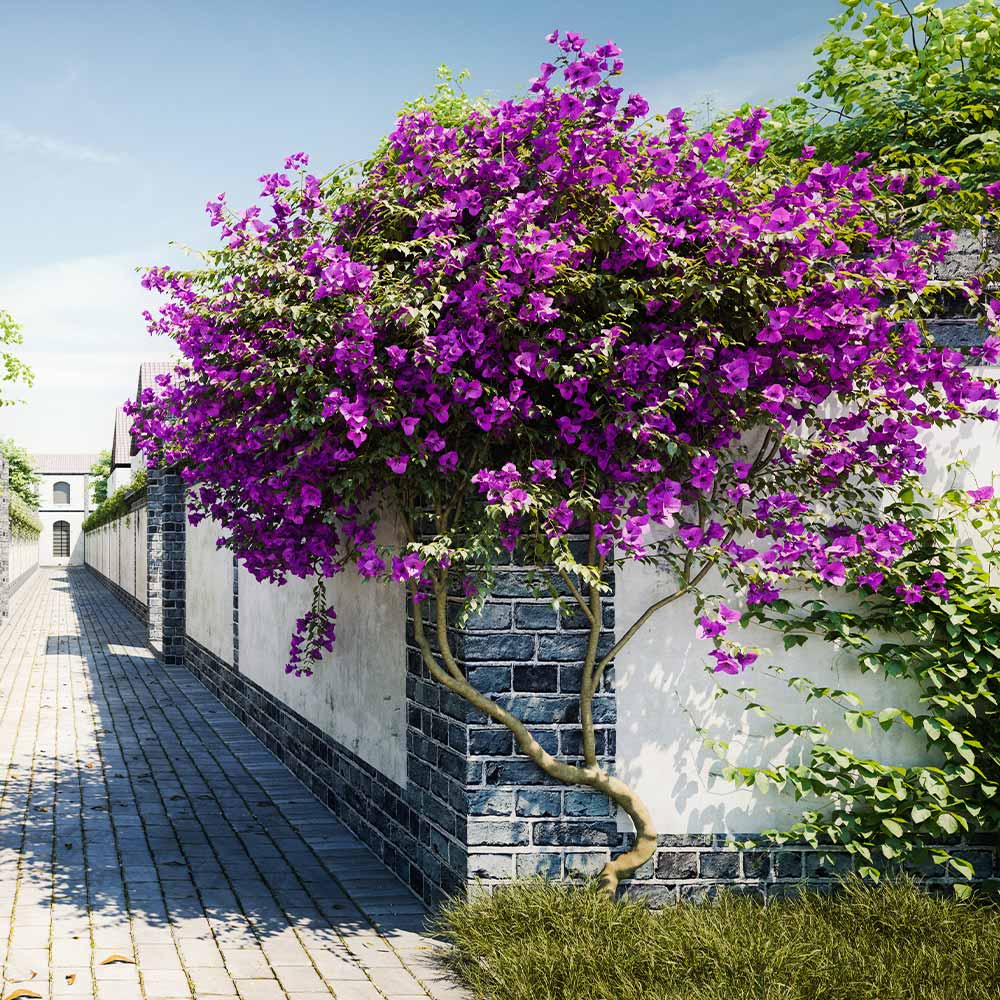How to prune bougainvillea – expert trimming tips to control plants and boost blooms
Know the best time to prune these climbing plants - and discover simple recommendations to make sure you trim correctly


Bougainvillea are climbing plants that are often used to cover walls or trellises. Loved for their bright and colorful bracts, these tropical plants need to be trimmed annually to keep them in check.
The vining plants are hardy in US hardiness zones 9b-11 and can survive outdoors year-round. In colder climates they are either grown as annuals or used in containers or hanging baskets, to be brought indoors to overwinter and brighten up a greenhouse or conservatory.
When you are growing bougainvillea, they will benefit from trimming regularly throughout the year. The methods for how to prune bougainvillea are simple to follow. We haver gathered tips from plant experts about when and how to trim these popular climbers.

Bougainvillea are prolific climbers that do benefit from regular pruning
Why is it important to prune bougainvillea?
Bougainvilleas are vigorous growers and they do need to be kept under control. For example, it may be one of the best climbing plants for the front of the house, but can quickly grow into a crowded and unruly mess if left to its own devices - which would not be an attractive welcome to your home.
Pruning keeps the plants at a manageable size and stops them looking wild and unkempt.

Bougainvilleas need to be kept under control on the front of a house
When to prune bougainvillea
Bougainvillea can be pruned in two windows throughout the year. The first is the ideal time for pruning for structure and form, and the other to tidy and promote more flowering.
‘The best time to do any major structural pruning is in late winter or early spring when the bougainvillea is in a semi-dormant state,’ says Jessica Mercer from Plant Addicts. ‘It produces flower bracts (not actual flowers) on new growth, so prune before it begins to leaf out in the spring.’
Design expertise in your inbox – from inspiring decorating ideas and beautiful celebrity homes to practical gardening advice and shopping round-ups.
It is important not to make a pruning mistake and head out too early to prune. If you prune bougainvillea in late fall you will stimulate a new flush of growth that will not have time to harden off and will be damaged by frosts.
The other time to prune bougainvillea comes in summer. It can be done anytime during the summer as the plant is actively growing, however the task is best avoided during periods of extreme heat.

Jessica Mercer, PhD, is the Senior Content Marketing Coordinator for Plant Addicts. As a plant collector, Jessica enjoys growing many different plants and learning about the best culture practices for each. She uses her science background to research interesting plant topics and present the information to other gardeners for Plant Addicts.

Bougainvillea are pruned in late winter or early spring, and during summer
How to cut back bougainvillea
The colorful bracts of bougainvillea appear on new shoots produced that year and the pruning takes place in late winter or early spring before that year’s growth starts to sprout. Start by looking to remove any dead, damaged, or diseased stems from the plant before embarking on pruning to create the required form.
Bethany Lakatos, Plant Expert at Fast Growing Trees, advises to assess and identify which shoots have outgrown the required space, whether it is on a wall, trellis, or if you are growing the climbing plant on an arch.
‘Follow these shoots back to a healthy bud or to the main shoot, which may look like a thick branch, and make a pruning cut,’ she recommends. ‘Next, assess the base of the plant, looking for older, crowded wood (the older wood will be the thicker, brownish green wood).
‘Cut out these older stems, and tie in young shoots to fill gaps where the older stems were removed. Side shoots growing off of main branches can be pruned back to about an inch, leaving a few leaves or buds on the shoot.’
The summer pruning is very simple to undertake and allows you to encourage more branching and flowering by pruning or pinching off new growth and removing old flower clusters.
Jessica Mercer recommends: ‘Snip the ends off leggy branches above a node, and 2-3 new shoots will typically emerge below the cut. You should also deadhead or pinch out spent blooms (bracts) to encourage new growth and extend the blooming season.’
The deadheading of withered bracts should be done regularly throughout the blooming period, as it can prolong flowering all the way through into fall.

Bethany Lakatos is a Plant Expert at Fast Growing Trees. She graduated with honors from Oregon State University with a BS in Horticulture with a focus on sustainability and a certificate in Permaculture Design. She loves to talk about soil and edible landscaping, and lives just outside Fort Mill, SC, where she has the opportunity to delight and geek out over all the plants in the Fast Growing Trees nursery

Regularly trimming bougainvilleas can mean a longer season of color
How to prune bougainvillea in pots
Compact varieties of bougainvillea can be grown successfully in pots as part of a container garden. The flowering vines can then be kept under control by pruning them little and often as required to keep them to your desired size and shape.
‘Maximum color and compact growth are especially important for bougainvillea grown in containers or hanging baskets,’ says Bethany Lakatos. ‘Though these types of bougainvillea need less pruning and maintenance, removing spent flower clusters or pruning back a long shoot here and there can keep plants looking fresh and well kept throughout the growing season.’
Bougainvillea in pots will require a prune in winter or early spring to cut back last year’s flowering stems and develop the form and size that you want it to be ahead of the new growth starting in spring. A plant brought indoors over winter will start growing earlier than plants outside in the garden - so that will impact when you do the winter prune.

Bougainvillea can be kept compact in pots by regular pruning
Tips for pruning bougainvillea
- Always use clean and sharp pruning shears to trim bougainvilleas. It will make pruning easier, make clean cuts that are easier to heal, and reduce the risk of spreading diseases around the backyard
- Bethany Lakatos warns to ‘avoid using electric hedge trimmers’ on bougainvillea, saying: ‘This only removes the outer growth and can leave jagged, uneven cuts or wounds in the woody shoots.’
- Many bougainvilleas have sharp thorns, so it is recommended to wear thick gloves and long sleeves when trimming the plants. A pair of thorn-proof gardening gauntlets, such as these Heavy Duty Gauntlets available at Amazon, are ideal for trimming bougainvilleas
- Any trimmings can be saved to propagate new bougainvilleas, as they root fairly easily from plant cuttings
FAQs
Can you prune bougainvillea in summer?
Yes, the plants can be pruned in the summer and it is actively recommended to trim bougainvilleas during the summer to tidy up any wayward stems and encourage a new flush of colorful bracts.
How do I make my bougainvillea bushy?
Regular pruning can help a bougainvillea to grow thicker. Cutting back branches while the plant is young will help to encourage bushier growth from the base. Pruning stems just above a node will cause branching and two or three new stems are likely to emerge. Cutting back a shoot in spring to around a third of its length will encourage new shoots that can fill bare patches.
Bougainvilleas are plants that can be used to bring a Mediterranean garden vibe to your backyard ideas. They can scramble up a trellis and brighten up a vertical surface, such as a wall or fence.

Drew has worked as a writer since 2008 and was also a professional gardener for many years. As a trained horticulturist, he worked in prestigious historic gardens, including Hanbury Hall and the world-famous Hidcote Manor Garden. He also spent time as a specialist kitchen gardener at Soho Farmhouse and Netherby Hall, where he grew vegetables, fruit, herbs, and cut flowers for restaurants. Drew has written for numerous print and online publications and is an allotment holder and garden blogger. He is shortlisted for the Digital Gardening Writer of the Year at the 2025 Garden Media Guild Awards.
